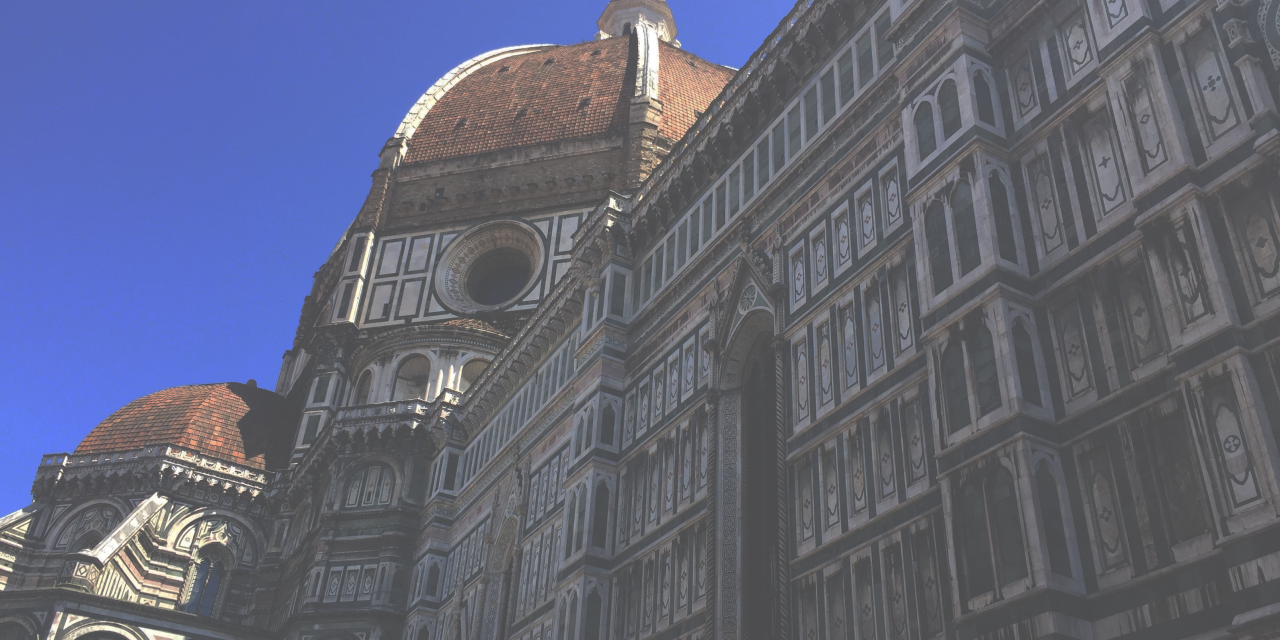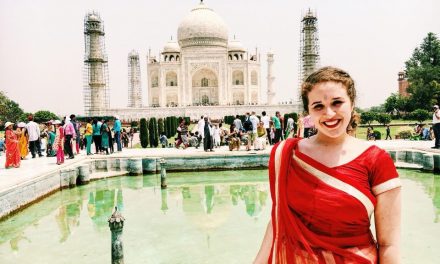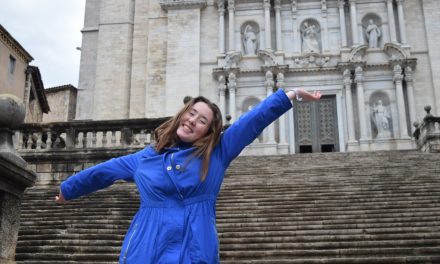 It is Eric Johns’ 20th birthday. He is at a table filled with 18 people, all celebrating him. He feels as if he has known them for a lifetime, but he had met most of them only three weeks before in the Florence airport. The steaming pizzas, frutti di mare, formaggio, salami and prosciutto, start rolling out of the kitchen. Johns’ friends joyously rave over the meal and his notorious good taste in pizza. The plates are cleared away to make room for the last course: millefoglie: a delicate, pastry-layered, creamy dessert only eaten at weddings and birthdays. Everyone sings Buon Compleanno while Johns blows out the candles and pops his first bottle of champagne, feeling on top of the world.
It is Eric Johns’ 20th birthday. He is at a table filled with 18 people, all celebrating him. He feels as if he has known them for a lifetime, but he had met most of them only three weeks before in the Florence airport. The steaming pizzas, frutti di mare, formaggio, salami and prosciutto, start rolling out of the kitchen. Johns’ friends joyously rave over the meal and his notorious good taste in pizza. The plates are cleared away to make room for the last course: millefoglie: a delicate, pastry-layered, creamy dessert only eaten at weddings and birthdays. Everyone sings Buon Compleanno while Johns blows out the candles and pops his first bottle of champagne, feeling on top of the world.
“I wish everyone could celebrate at least one birthday in Italy,” said Johns, a junior in The University of Alabama Honors College. “Having the Italian lust for life showered over you is surreal.”
Johns, majoring in biology with a minor in Italian, studied in Florence, Italy for four weeks this past June through the UA in Italia: Language and Culture program. He lived with a host father and retired actor, Vincenzo de Caro, and two other students on the trip in an apartment near the city’s famous Mercato Centrale, or “central market,” that was built at the end of the 19th century. He studied Italian at Scuola di Leonardo da Vinci every weekday morning, and in the afternoons the UA group, led by professor Claudia Romanelli, would visit museums and historical sites around Florence or travel to nearby Tuscan cities.
“I prepared for the unexpected and allowed myself to feel comfortable in uncomfortable situations,” Johns said.
Johns had been to Italy once before, but that did not prepare him for the nation’sculture. He said Italians have lives built on foundations that Americans know nothing about. Italy has such a long, preserved history of cities flourishing on the remains of the Roman Empire, and the Italians reflect this through their approach to family, celebrations, cuisine, and pride in the art and architecture left by their ancestors.
“Florence especially is characterized by a new modernity in an old atmosphere,” Johns said. “There are restaurants thriving in 15th century convents and high-end retail stores less than a block from the Duomo.”
 Johns said his enchantment with the city grew each day as he walked by Il Duomo, or officially the Cattedrale di Santa Maria del Fiore, which means “Cathedral of Saint Mary of the Flowers,” on his way to class. Its construction took almost 150 years and was finished in 1436. Johns said the cathedral took his breath away each time he saw it, and he caught himself imagining what it was like for Florentines to look up at the green, white and pink marble masterpiece as they went about their day six centuries ago.
Johns said his enchantment with the city grew each day as he walked by Il Duomo, or officially the Cattedrale di Santa Maria del Fiore, which means “Cathedral of Saint Mary of the Flowers,” on his way to class. Its construction took almost 150 years and was finished in 1436. Johns said the cathedral took his breath away each time he saw it, and he caught himself imagining what it was like for Florentines to look up at the green, white and pink marble masterpiece as they went about their day six centuries ago.
“It is said that a city is defined by the people,” Johns said, “But it is hard to separate Florence from the people of the city. They are so inspiringly intertwined.”
When it comes to food, Johns knew what it looked like and understood the main dishes from his first trip, but he had no idea of the traditional preparation methods, the Italian way of taking the freshest ingredients and getting the best out of calories. He said they use as much of the animal as possible to avoid waste, such as lampredotto, a Florentine dish made from the fourth stomach of a cow. Johns also admired the simplicity of the food while the taste was so complex. Ragu, traditional tomato sauce, is comprised of only tomatoes, basil, olive oil, and garlic and takes just a short time to cook, but when he tasted it he thought the contrary.
“The cuisine more than anything reflected the deep-set traditions of Italian culture,” Johns said. “The necessity to learn is the easiest way.”
Johns’ favorite meal was prepared by one of his friend’s host mother on their last day in the city. It was mushroom penne and cheesy rigatoni with espresso and tiramisu for dessert. He did not have an unsatisfactory meal the whole trip, and he enjoyed the unique flavors and dishes of each region he visited.
 “The Italian meal is centered around atmosphere and communion,” Johns said. “And that one month completely reshaped my taste palette. I would have regretted not trying every bizarre dish placed in front of me.”
“The Italian meal is centered around atmosphere and communion,” Johns said. “And that one month completely reshaped my taste palette. I would have regretted not trying every bizarre dish placed in front of me.”
Traveling to another continent is definitely an ordeal, Johns said, but he refused to let the fear of something stop him from doing it. He put a lot of trust into thinking it would go right and allowed himself to be vulnerable to the Italian people and their culture.
“I came to the understanding that their way of life is much different from America, but in no way wrong,” Johns said. “It was incredible how my perception changed as I saw the way Italians really lived, and as a result, I learned so much about myself.”






